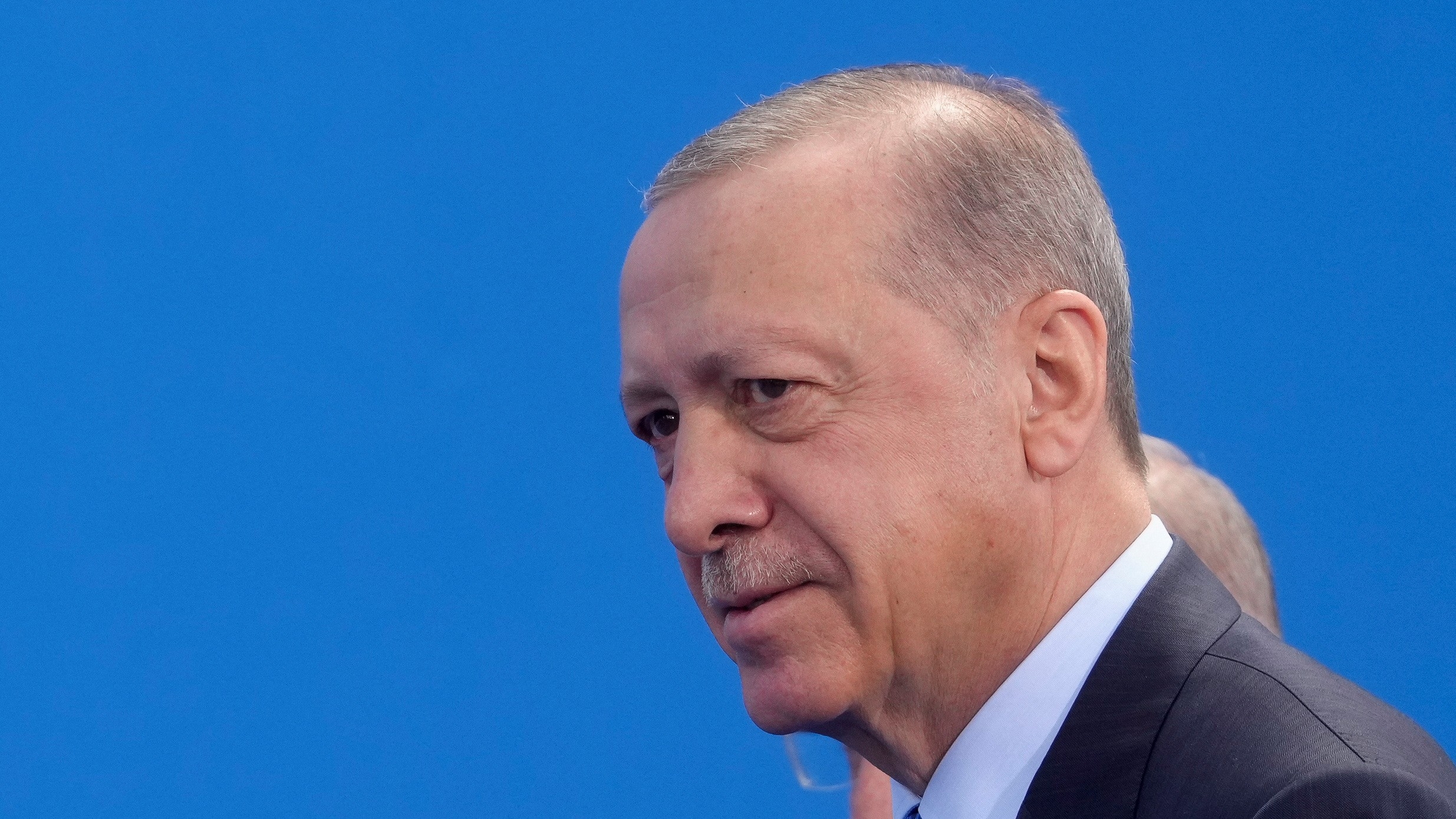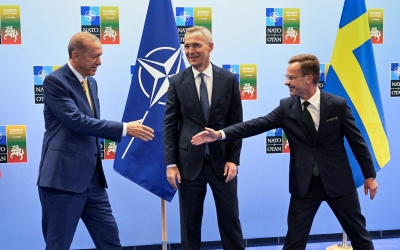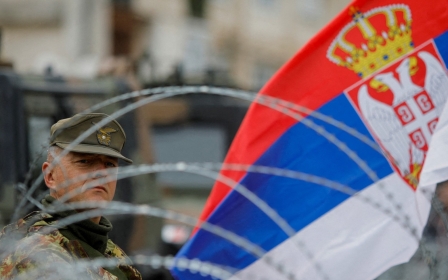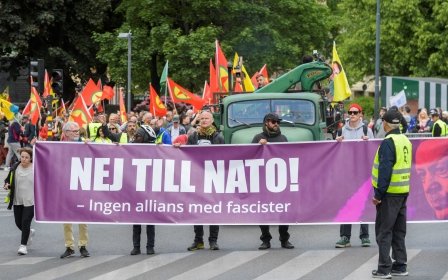Sweden-Nato: F-16s and ending Canada's arms embargo win Erdogan's approval

After weeks of insisting he would block Sweden’s bid for Nato membership, Turkish President Recep Tayyip Erdogan on Monday said he would allow it to move forward. It left many wondering what on earth changed his mind.
Two sources familiar with the negotiations between Turkey and its western allies told Middle East Eye that there were two primary developments that convinced Erdogan - not without several setbacks along the road.
First, the Biden administration decided to play ball with Erdogan’s government after Turkey’s elections in May, which cemented the Turkish president’s power for another five years.
After a congratulatory post-election phone call with Erdogan, Biden openly told the media that he could satisfy Turkey’s request for $20bn worth of F-16 fighter jets deal if Ankara approved Sweden’s Nato bid.
Several phone calls and meetings between senior Turkish officials and their American counterparts - including the foreign ministers, chief advisors and spy chiefs - established an understanding on the F-16 request.
A separate source told MEE that the deal included 40 new aircraft and kits to overhaul 79 of Turkey’s existing F-16 fleet, as well as more than 900 air-to-air missiles and 800 bombs.
The second issue that convinced Erdogan was Canada agreeing to drop its arms embargo against Turkey, officials told MEE.
Ottawa initially imposed an embargo in response to Turkey's military offensive in northern Syria in 2019. It partially backtracked on this decision in June 2020, and approved the sale of drone optics after high-level talks with Turkey.
However, Canada suspended military exports after video footage indicated the use of Canadian-made Wescam optics in drones in Nagorno-Karabakh in October 2020, where Turkey was backing Azerbaijani troops against Armenian forces.
Previously, Turkey has heavily relied on advanced drone optics produced by Canada.
A spokesperson for Global Affairs Canada told Middle East Eye that "export controls for Turkey remain in place".
"Canada and Turkey continue to engage in frank exchanges on our bilateral, economic and commercial relations."
Sweden angers Erdogan
While those deals were being finalised, Sweden took a series of steps to placate Erdogan, such as convicting a Kurdistan Workers’ Party (PKK) supporter, launching investigations against terror funding and closely working with Turkish security agencies to establish a desk to track activities in Sweden of people linked to the Kurdish armed group.
Erdogan was close to giving a final green light.
But then all of a sudden Swedish authorities allowed a protester to burn the Quran in Stockholm on the first day of Eid al-Adha, despite consternation from Erdogan and the Turkish government. Making matters worse, it took four days for Stockholm to condemn the move.
The officials said the whole incident angered Erdogan, a pious Muslim who accuses the West of double standards when it comes to freedom of speech and religion.
And then last weekend Erdogan came up with an additional request during a phone call with Biden: top EU leaders and countries should release statements of support for Turkey joining the European Union and reviving accession talks that have been on ice for years.
The source said Biden was pleasantly surprised by Erdogan’s comments on the revival of the EU process, and told him over the phone that as senator he’d been instrumental when the Clinton administration was encouraging the European Union to accept Turkey. He’s like to help, Biden told Erdogan.
A spokesperson for the White House declined to comment.
On Monday, Sweden said it would actively support efforts to reinvigorate Turkey’s EU accession process, including modernising the EU-Turkey customs union and liberalising visa application processes.
Erdogan also met EU President Charles Michel, who promised to prepare a report on the state of Turkey-EU relations, as he had been mandated to do by the bloc's leadership last month.
Finally came Erdogan’s decision to approve Sweden’s bid.
It isn’t immediately clear whether Erdogan secured any promises from German Prime Minister Olaf Scholz or French President Emmanuel Macron over EU membership on Tuesday at the Nato summit in Vilnius. But Scholz said he would discuss Turkey-EU relations with the Turkish president during a bilateral meeting on the summit's sidelines.
US National Security Advisor Jake Sullivan told journalists on Wednesday that Washington would move ahead with the transfer of F-16 fighter jets to Turkey in consultation with Congress.
US Senate Foreign Relations Committee chairman Bob Menendez, a key player that was blocking Ankara’s F-16 request, also said on Monday that there was a temporary "lull" in Turkey's "aggression against its neighbours" and said he is in talks with the Biden administration about the blocks he’d put on the deal.
Officials believe Biden won’t have a hard time getting the sale through Congress after the Turkish parliament ratifies Sweden’s Nato bid next week. The US administration plans to submit an F-35 sale to Greece jointly with Turkey’s F-16 purchase to satisfy sceptics in Congress.
Notably, Ankara has also been treading carefully in its relations with Athens, recently deciding to jointly begin confidence-building measures.
This article is available in French on Middle East Eye edition.
Middle East Eye propose une couverture et une analyse indépendantes et incomparables du Moyen-Orient, de l’Afrique du Nord et d’autres régions du monde. Pour en savoir plus sur la reprise de ce contenu et les frais qui s’appliquent, veuillez remplir ce formulaire [en anglais]. Pour en savoir plus sur MEE, cliquez ici [en anglais].





